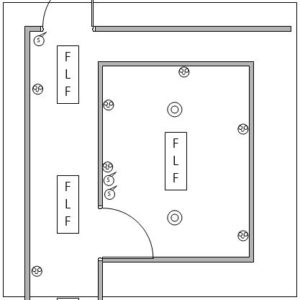In this installment of "Necessity is the Mother of Invention, Not you" we will discuss the value of using a common lexicon and dictionary in successful projects.

I cannot count the number of times in my short 30 year career that I have received a document, design, project plan, process manual, or specification in which I did not understand the terms used. These artifacts were laced with acronyms, terms and techno-jargon in which I was unfamiliar or the use of the term was inconsistent with my understanding of its definition.
In some cases the creator did use a published dictionary but they failed to cite the source so others could establish a point of reference. In other words, they attempted to communicate without a dictionary. (We will dive into the importance of citations in another post). The result was a project artifact that failed to meet its intended purpose because the reader could not comprehend the contents.
Imagine that you are an electrical contractor and you have been given facility electrical diagrams containing strange symbols and there is no reference key to determine what the symbols mean in the diagrams.

Does that unicorn mean an outlet, a switch or a generator?
Imagine now that you are the customer paying for these diagrams and the designer is charging you by the hour to create then track the meaning of every icon on those diagrams. Are you paying a premium for a design that no one can read? How much did that unicorn symbol cost you?
Imagine yet that you are a building inspector and you are reviewing these designs for compliance with local building codes. How confident will you be of the designer's qualifications? ![]() How many big nose faces are required in an office space?
How many big nose faces are required in an office space?

The architecture and engineering industries have adopted standard icons for many of the frequently used elements in a facility design. An example is the electrical icons depicted in the IEEE Standard for Graphic Symbols for Electric and Electronic Diagrams. I learned the standard symbols for electrical devices in the early years of my career and they have not changed much since. Still no unicorns.
These examples may seem funny, but I bet most of you can share similar experiences with project artifacts.
When you create artifacts for your projects do you use an existing dictionary or do you invent your own? Are there any unicorns in your work?
Do your project meetings turn into debates about the meaning or intent of words, project tasks or deliverables?
When you communicate with your customer, do you use excessive techno jargon and acronyms? Do you like to communicate using big nose words?
Communicating between technical disciplines or between technical and non-technical parties has a high risk of misinterpretations simply because of the specialized nature of our professions. Adding buzzwords, acronyms and techno-jargon increases the risk of communication failures. Communications that is not understood is just noise. Communication that confuses your customer, makes them feel uneasy or erodes their confidence does little to help the customer's value proposition for your services.
Suggested Best Practice:
When standing up a new project team, establish and agree upon a common lexicon for the team. According to INCOSE 2015, one of the systems engineer's first and most important responsibilities on a project is to establish a nomenclature and terminology that support clear, unambiguous communications" (Pg 4). The Project Management Institute has similar guidance in the Project Management Body of Knowledge (PMI 2017 p3).
The following are examples of published dictionaries and lexicons that can be adopted for your project:
- IEEE/ISO/IEC System and Software engineering - lifecycle processes 15288.
- IEEE/ISO/IEC Systems and software engineering – Vocabulary 24765. This vocabulary is the dictionary for the System and Software engineering - lifecycle processes 15288. (See SE Vocab)
- The SE Vocab web site is a single source database for systems engineering terms listed in the IEEE/ISO/IEC Documents as well as some of the common PMI Terms.
- IEEE Standard for Graphic Symbols for Electric and Electronic Diagrams.
- International Council on Systems Engineering: Systems Engineering Handbook. A guide to the system life cycle processes and activities.
- The PMI Lexicon of Project Management Terms (PMI.org)
- The Guide to the Project Management Body of Knowledge (PMBOK). Program Management Institute.